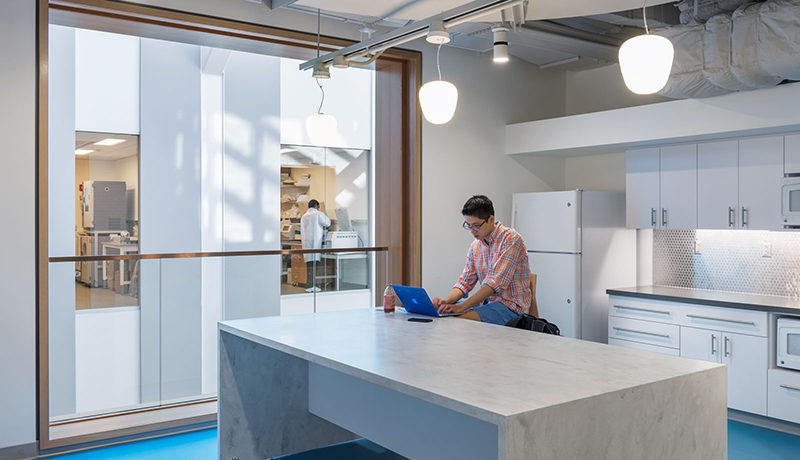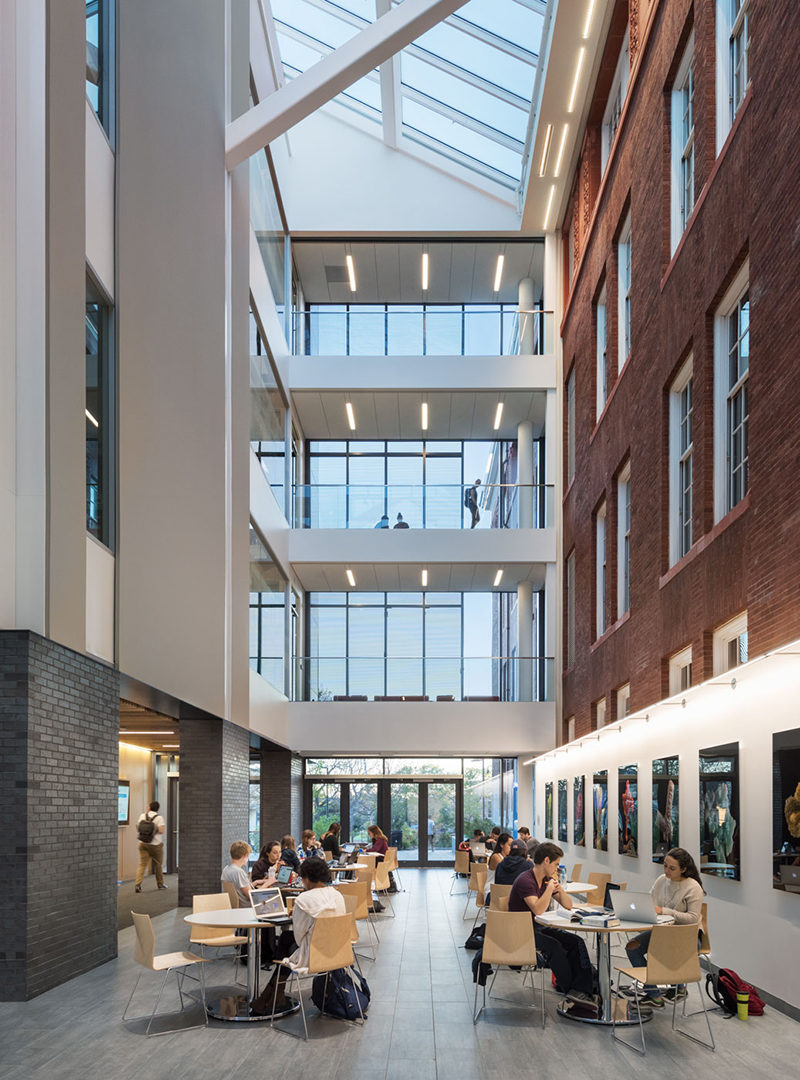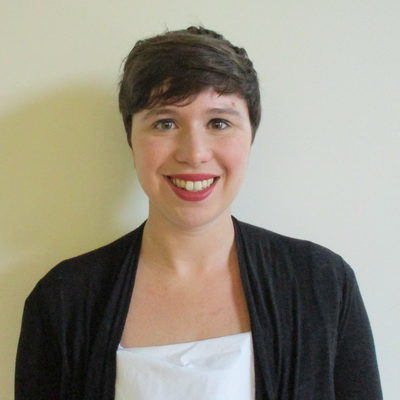I’ve been taking photographs professionally for a little over three years – not very long, especially for someone with no formal photography training. I was introduced to photography at my previous job, where I was handed a camera and some good advice from a colleague who had one semester of formal training and a lot of raw talent. Most of my experience is in event and action photography, but I still feel sometimes like I don’t know much about the cameras I use. Because my experience feels limited, I’m interested to learn about the world of architectural photography, which seems like a whole other ball game.
As I learned at our recent series of photoshoots at the new Tufts University Science and Engineering Complex, it is. The PAYETTE staff assisting on the shoot accompanied photographer Chuck Choi and his assistant, trekking up and down the Complex’s hallways and grounds, moving furniture and recycling bins and asking students if they minded posing for a minute. We photographed the building, its details and many of the public spaces, including common study areas and outside walkways. I quickly learned that the ratio of time spent setting up to time spent taking photos is at least 3:1, which I wasn’t expecting. It was illuminating to see how Chuck and our team wanted to stage each location.

When setting up shots, we removed potted plants, books, posters and makeshift signs, sometimes even tables and chairs – in other words, most of the evidence that people were occupying the spaces at all. The result is a cleaner photograph that has the ethereal quality of people being in a space without actually being in it. Photos without people wouldn’t fully express the vibrant life of the building, but photos with too many people or things might look cluttered and unfocused. This is, after all, an architectural photoshoot. I guess in architectural photography, people both are and are not the point.

For this project I wasn’t able to attend the full shoot, so I missed the opportunity to learn more about how Chuck sets up shots, and why and how he decides which vantage point shows the space best. As you can see from this small sample of photos, his work captures the sparkle of built spaces, which I’m certain he is able to do with specific settings and equipment. However, our team was focused on chasing the best light and making the most of our time at the shoot, and it wasn’t the time to break that focus.
I can’t wait for the next shoot. I want to learn more about how to stage and frame different spaces, and it’s fun to help craft a photograph that might become a centerpiece of the marketing materials I create at PAYETTE. Plus, I might be able to learn more about the techniques that architectural photographers like Chuck use to make spaces of glass and brick seem almost otherworldly.


